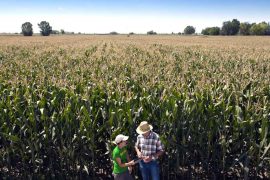No longer a thing of the future or confined to the realm of science-fiction, self-driving car are set to become part of our lives. Vehicles now exist that can drive themselves, overtake, join motorways, plan routes and park, all without the need for human intervention. These advances mean that the sight of “drivers” reading the newspaper or talking on their phones instead of having their hands planted firmly on the steering wheel will soon become commonplace.
Many vehicles currently on the market already have assisted parking systems or other technologies to make life easier for their drivers. It’s a sign that science and technology are just a few steps away from reaching full autonomy. Driverless cars are now being tested over long distances throughout the world.
There has been much talk about self-driving, robotic and driverless cars in recent years. The terms refer to vehicles that can imitate the human skill of driving and operating cars, sensing what is going on around them and reacting accordingly. The driver just needs to set the destination, with no other mechanical operation required to start the vehicle.
All this has been made possible by advances in technology that have transformed the cars we drive into intelligent and autonomous vehicles. To do so has required the development of three different interconnected systems.

The first requirement for making a vehicle independent of humans is for it to be able to locate itself in space, which means finding its position on a map and detecting elements around it such as buildings and roundabouts. This is achieved using highly sophisticated GPS systems. The vehicle also requires a dynamic recognition system to identify strange and unexpected objects along the way, such as obstacles on the road, pedestrians and rain. This second feat is achieved using cameras, lasers and sensors, which provide real-time information on what is happening around the vehicle.
Finally, there is also a programme that uses the information received from the other systems to take action, such as deciding whether the car should accelerate, brake, turn or overtake depending on the circumstances. This final achievement is possible thanks to advances in artificial intelligence and machine learning, which allow a machine to act and think about what it is doing, almost like a human. All this means that when automated cars have fully evolved, not only will they be able to follow the highway code just as well as—or even better than—the majority of other drivers, they will also have processed the most common habits and mistakes in each area or country, allowing them to immediately react to any unexpected events like someone crossing the road outside a pedestrian crossing.
Artificial intelligence and machine learning enable devices to behave and think almost like a human would do..
As previously mentioned, some vehicles already incorporate some of these self-driving systems. The next step is to develop vehicles in which drivers can completely switch off from operating their cars. In this context, the international Society of Automotive Engineers (SAE) has established a five-level classification for automated driving. The first three steps on this ascending scale of automation relate to technologies that require human intervention in the event of an emergency. Examples of level-one features include cruise control, lane-keeping assist and other similar features. Next on the scale, level two systems use level-one technology to automate more complex driving tasks. This is the highest level of automation available in vehicles currently on the market.
These are followed by level three systems, which allow the driver to activate autopilot in certain circumstances, such as during a traffic jam on a motorway. The remaining two levels are profoundly different to the others, since they operate almost completely without human help. In specific terms, level four systems (High Automation) cover all aspects of dynamic driving but only operate under strictly defined circumstances, such as closed parking or motorway lanes reserved for this type of vehicle. Finally, at level five (Full Automation), the vehicle is fully automated and the driver becomes a passenger.
REDUCING ACCIDENT RATES
Even though self-driving cars cannot yet circulate freely on our roads and are not yet available for sale, people are already talking about how these vehicles will revolutionise the driver experience, bringing numerous advantages. One of the biggest and most widely discussed of these is safer driving. According to statistics from the Spanish Traffic Authority, in 2016 there were 1,038 fatal accidents in Spain, resulting in 1,160 deaths and 5,067 serious injuries. The body estimates that human error was responsible for 90% of accidents. In this context, autonomous driving systems have the potential to reduce the number of hazardous driving situations, such as breaking speed limits, dangerous overtaking and lane drift, helping to reduce accident rates. It is estimated that driverless cars will be able to reduce the accident rate by over 80% by 2050.
They will also help improve mobility. For example, driverless technology will allow people with physical disabilities that prevent them from driving and elderly and young people to move about without problems, since the car will do everything for them. The technology will provide mobility solutions for groups that cannot currently drive a vehicle.
Self-driving technology is also expected to lead to improvements in congestion. Cars will be able to circulate more freely, avoiding bottlenecks and making better use of the available road space. Double parking will become a thing of the past, with cars able to keep driving after passengers have got out.
Another big advantage of this technology is improved fuel consumption and efficiency, as vehicles will be designed to optimise fuel economy. In addition to avoiding sharp acceleration, braking and changes in speed, it will also help reduce CO2 emissions, meaning self-driving cars will create less pollution.
An equally important aspect is increased comfort for drivers, since they will no longer have to concentrate on driving or worry about traffic. Our experiences as drivers will undergo radical change: we will be able to use journeys for all sorts of different activities, such as reading, talking to people on the phone and watching films. The inside of cars will be transformed into spaces for leisure and rest.
“Everything suggests that by around 2020 vehicles with a certain level of autonomy will be available to the general public.”
In this context, the car industry has been researching and developing driverless vehicles for several years now. Toyota, for example, has been researching autonomous driving systems for ten years. According to Enrique Centeno, PR & Corporate Affairs GM at Toyota Spain, self-driving vehicles have incredible potential and “all the signs show that by 2020, vehicles with certain levels of autonomous driving will be available to the general public.”
The Japanese manufacturer has recently unveiled its second-generation advanced safety prototype vehicle, in partnership with Toyota Research Institute (TRI), a company created at the end of 2015 that focuses on artificial intelligence, robotics and autonomous driving, and works with Stanford University and the Massachusetts Institute of Technology (MIT). “This driverless vehicle, which is still in the test phase, will be used to explore a wide range of functions related to autonomous driving,” explains Centeno. Its teams in the USA and Japan are working to make these systems even more sophisticated.
They are joined by Apple, whose CEO Tim Cook recently confirmed that the company is developing an automatic driving system. However, Apple has not yet revealed whether the system is just software or if it is building its own car. “We are focusing on autonomous systems. And clearly one purpose of autonomous systems is self-driving cars, there are others. And we sort of see it as the mother of all AI projects. It’s probably one of the most difficult AI projects, actually, to work on,” he remarked in June this year.
SELF-DRIVING CARS WILL BE ON THE MARKET BY 2020
Tesla has also announced that all its cars will be fully autonomous within two years. The company already has a semi-autonomous car, the Tesla S, which incorporates its Autopilot 2.0 system, using cameras and sensors to support the driver. However, it is important to note that this is not a fully self-driving system, since the technology is merely assistive: to change lane you need only flick the indicator and the vehicle does everything else.
At the start of 2017, Audi unveiled its Q7, a self-driving car developed in partnership with the company Nvidia. The company’s PilotNet automated driving system is based on artificial intelligence that allows the vehicle to learn and build its autonomy based on what it learns from a human driver. Even though it will be some time before the car hits the roads, next year will see the launch of an A8 equipped with semi-autonomous technology.
Google has also been a pioneer in the development of self-driving cars, with a project dating back to 2009 and the first tests taking place in 2012. Self-driving cars are of such importance for the American behemoth that it has created Waymo, a company specialising in the development of driverless systems, within the Alphabet conglomerate.
In 2012, Google provided its staff with self-driving cars to allow them to test them on their daily commute and in April this year the company conducted its first public trial in the city of Phoenix in the USA. One hundred vehicles (without steering wheels or pedals) were made available to its citizens to help determine the real needs of users and their expectations from self-driving cars.
Closer to home, in Europe, the European Truck Platooning Challenge event in 2016 saw a group of autonomous lorries take to the continent’s motorways for various days. The three automated Mercedes-Benz Actros were connected via Wi-Fi and travelled from Stuttgart to Rotterdam.
Finally, in Spain, a car drove 599 kilometres between Madrid and Vigo in 2015 without the help of a driver. The prototype from the Peugeot-Citroën laboratory incorporated PSA technology, which allows the car to drive autonomously on dual carriageways, motorways and express roads, controlling speed, lane changes and overtaking with the supervision of a driver but without his or her direct intervention.
NEW USES OF THE SPACE
Self-driving technology is still in its early stages and companies are still experimenting with driverless cars. However, rapid advances are being made and level five of the Society of Automotive Engineers’ scale (Full Automation) is expected to be reached by 2050. The gradual trend in which cars incorporate new systems to allow us to partially disconnect from driving looks set to continue.
When the time comes, self-driving cars will represent a revolution not just in driving but also in people’s lives and the layout of cities and roads. All these changes will require planning and a process to adapt to the new context.
For instance, reducing traffic volumes will make it possible to reduce the space used for the circulation of cars. According to expert Blaine Leonard in comments to SmartCitiesDive, motorways in the USA currently have a capacity of 2,000 cars per hour. The efficiency of new driverless systems has the potential to increase this to 3,000 or 3,500 cars per hour.
The decrease in traffic volumes will allow the space set aside for private vehicles to be reduced.
The same applies to parking spaces. The expert points out that 30% of traffic in the commercial districts of San Francisco and Los Angeles comes from people looking for somewhere to park their car. If self-driving cars can drive autonomously to a parking space outside the city centre (which will also be cheaper), it will be possible to reduce the space required for parking. Moreover, local parking regulations and residents-only zones will no longer be required.
All this would help free up space in cities, which could be used for new purposes. Pavements could be expanded, for example, or more parks and leisure and culture spaces could be created. In fact, Kinder Baumgardner, head of the Houston architecture studio of the multinational company SWA has proposed reusing underground car parks for housing. Such housing would be much cheaper due to the lack of natural light but also much more spacious than a normal home on the surface.
The structure of roads and their components will also need to be adapted to the new context. It will be important for lane markers to be clearly painted so cars can “see” them better and road signs will become less important because vehicles will know which exits to take and at what speed to travel.
However, perhaps the biggest engineering challenge will be to fit out roads with fibre-optic technology and sensors that gather information and share it with other vehicles circulating on that stretch. In the USA, Utah has spent 20 years incorporating this system into its roadways and Ohio invested $15 million in installing fibre-optic cables and conducting various tests in this field as part of a Smart cities project.
It is also believed that reduced traffic and more comfortable journeys will allow cities to expand and more people will be willing to live outside the centre and travel to work every day.
While self-driving cars will clearly bring a large number of changes and benefits, there are a number of obstacles that must first be overcome. One of the biggest, a factor that jeopardises occupant safety, is the reliability and accuracy of roadmaps. High-definition maps are an essential ingredient for the correct operation of a self-driving car. Without them, the car won’t know where to go, what obstacles it might come across on its journey or in which lane of the motorway it is positioned if it needs to overtake. Centimetre precision and real-time information are essential, which means that the companies behind maps and GPS systems need to improve and refine their products.
Another issue to be taken into account is the perception of this type of vehicle and its capacity for adoption in our societies. According to statistics in a study on autonomous and connected cars conducted by the website Coches.net, over half of Spanish drivers surveyed (55%) showed some reluctance towards the use of this type of technology, for the simple reason that they enjoy driving. This was followed by a group that felt unprotected (25%), a group that worried about mechanical and electrical faults (15%) and finally those who believed the technology would be too expensive (5%). It is expected for, all this to change, but it is possible that the introduction of vehicles will be slower to begin with.
Last but not least, governments must establish an adequate legal framework to permit autonomous driving. The 1968 Vienna Convention on Road Traffic currently states that drivers must be in control of their vehicles at all times and rules out highly automated driving. Although there are plans to modify the convention, the matter is currently being debated and for now countries must produce their own legislation in the area. States like Texas, which already allows self-driving cars to circulate on its roads, are leading the way. However, there remains a long way to go in Europe.
Spain is not a signatory to the Vienna Convention, which means that—at least in theory—autonomous vehicles can circulate freely. The country was one of the first countries to formally back the development of driverless technology and from 2015 has allowed tests and trials for research on autonomous vehicles on roads that are open to traffic. Furthermore, aware of the advances in driverless technology, the Spanish Traffic Authority has regulated the use of assisted parking systems without driver intervention. People who will only use these vehicles are exempt from the parking section of the country’s driving test, although, in reality, this has had a limited impact because of the lack of driving schools with driverless cars.
At the start of 2017, the authority also announced it was working on its first regulation for self-driving vehicles. The regulation will include provisions for automated driving, with definitions and requirements, and will be sufficiently flexible and robust to provide legal certainty for the rapidly changing industry. The document represents a first step to laying the foundations for regulating autonomous vehicles in Spain. Although it will be ready by 2017, the regulation is unlikely to be approved until 2018 or the following year.
The speed at which the technology develops will be the driving force behind the rapid resolution of all these issues. The imminent arrival of self-driving cars makes this a necessary step. The world is preparing itself for a future that refuses to stand and wait.
Write: Eva Fernández
ONTHEROAD is a magazine that wants to become an innovative space for the generation of ideas and debate around the universe of mobility. Promoted by Abertis, the world’s leading operator in the management of infrastructures at the service of mobility and communications, ONTHEROAD wants to participate in conversations, debates, initiatives and the search for solutions for the new challenges of this changeling world





















